Ten years ago, we couldn't have imagined how tools like machine learning, eDNA, and satellites would advance and transform conservation work. Now technology is advancing faster than ever, and as tools become smaller, lighter, and more affordable, it's vital to have a space where community members can discuss the next big thing, share ideas, compare tool options, and tell the story of their experiences - positive, negative, and anything in between - while using new technologies.
In 2021, the WILDLABS State of Conservation Tech report detailed what tools show the most promise according to community members, as well as what tools are currently seen as the most effective. And as new tools enter the field, we're excited to see how this data will change over time, and how this group grows over time as well.
Our State of Conservation Tech research also discusses something called the "Hype Cycle" - the pattern that occurs when a new technology bursts onto the scene, promises to be an exciting solution, encounters challenges as new users adopt the tool and put it into practice beyond just theory, and eventually settles into its most effective state as users acquire the right skills to use it to its actual potential. Machine learning, one of the most promising technologies, is currently in the middle of its own hype cycle, and we see community members working through their own hurdles to incorporate ML into their work effectively. Despite what you may think, this Hype Cycle can also be positive for tech development, as it means that users have big ideas for new tools, and with the right resources and skills, they can work toward bringing those ideas to life. And as our community members experiences the Hype Cycle for various tools at their own paces, we hope this group will also serve as a place to discuss that process and overcome hurdles together.
Ready to discover new possibilities? Join our Emerging Tech group now and get to know your forward-thinking conservation tech peers!
Header photo: Internet of Elephants
Conservation Science Coordinator for the Giraffe Conservation FoundationCo-Chair of IUCN Giraffe and Okapi Specialist Group

- 0 Resources
- 1 Discussions
- 5 Groups
- @LindyClydeKnowles
- | he/him
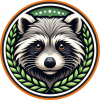
- 0 Resources
- 6 Discussions
- 6 Groups
- @eccrc25
- | she/they
- 0 Resources
- 0 Discussions
- 5 Groups
- @nadyam
- | she/her
Michigan State University
Conservation geneticist at Michigan State University. Co-founder of iCatch. Solving problems in monitoring, traceability, and enforcement through rapid species identification tech.
- 0 Resources
- 3 Discussions
- 6 Groups
Technologist and Visual storyteller focusing on social, conservations issues.


- 0 Resources
- 31 Discussions
- 16 Groups
- @Alex.S
- | She/Her
MSc Marine Biologist and Data Scientist, Co-Founder and CSO & CTO of Galene Pathways
- 0 Resources
- 0 Discussions
- 8 Groups
- @nabilla.nuril
- | She/Her
Incoming student of UCL MSc Ecology and Data Science
- 0 Resources
- 0 Discussions
- 11 Groups
- @Hansa
- | He/Him
- 0 Resources
- 0 Discussions
- 6 Groups
- @KelseyGrace
- | she/her
Hello! I am PhD student studying Animal behaviour and welfare at the University of Lincoln. I am specializing in studying gopher tortoise cognition and applying what we learn to conservation practices.
- 0 Resources
- 0 Discussions
- 6 Groups
- @LouisaRC
- | she/her
LRC Wildlife Conservation
With 20 years' experience as a Conservation Practitioner, I've transitioned from carnivore scientist to Dean, nurturing African conservation leaders. My focus now is on leveraging innovative Web 3.0 technologies for maximum conservation impact.
- 0 Resources
- 1 Discussions
- 4 Groups
- 0 Resources
- 0 Discussions
- 11 Groups
Neuroscientist & engineer transitioning to conservation tech. I have experience working with large imaging datasets, pose estimation and positional tracking, and machine learning. Looking to get involved with GIS, remote sensing, and AI for conservation.
- 0 Resources
- 0 Discussions
- 17 Groups
Careers
The Smithsonian National Zoo & Conservation Biology Institute is seeking a Program Manager to help coordinate multiple organizations in an effort to integrate movement data & camera trap data with global...
22 April 2024
In a recent publication we tested Underwater Passive Acoustic Monitoring (UPAM) as a feasible non-invasive technique to study the calling behavior of therathened aquatic Andean frogs under natural conditions in the...
6 April 2024
After a long application review and finalisation process, we are thrilled to finally announce the winners of the WILDLABS Awards 2024!
26 March 2024
Article
You’re invited to the WILDLABS Variety Hour, a monthly event that connects you to conservation tech's most exciting projects, research, and ideas. We can't wait to bring you a whole new season of speakers and...
22 March 2024
Catch up on the conservation tech discussions and events that happened during World Wildlife Day 2024!
7 March 2024
WILDLABS was honoured to represent the global conservation technology sector on the world stage, joining the World Wildlife Day celebrations at the UN. As an invited speaker, Stephanie O'Donnell used her talk to share...
7 March 2024
We invite applications for the third Computer Vision for Ecology (CV4E) workshop, a three-week hands-on intensive course in CV targeted at graduate students, postdocs, early faculty, and junior researchers in Ecology...
12 February 2024
A portable nanopore DNA sequencer has been used to determine the species of origin of bushmeat intercepted at Brussels Airport during a day of baggage searches.
6 February 2024
In this paper, we report new polynomial type architectures, that we show improve shape awareness in image recognition applications, including in conditions such as blur and fog, making things potentially useful for...
11 January 2024
Article
A game-changing new tool is helping conservationists working with critically endangered cliff plants
9 January 2024
Funding
With $60,000, $30,000, and $10,000 grants available for 14 outstanding projects, the support of engineering and technology talent from Arm (the leading semiconductor design company), and access to the world’s biggest...
1 December 2023
Funding
A 6-month tailored accelerator for underrepresented founders in Europe to scale their impact startup.
28 November 2023
August 2024
event
December 2023
event
| Description | Activity | Replies | Groups | Updated |
|---|---|---|---|---|
| Hi David - have you seen this opportunity? It may be a good one to apply to for support (the Darwin Initiative). |
+19
|
AI for Conservation, Drones, Emerging Tech, Human-Wildlife Conflict, Wildlife Crime | 1 day 20 hours ago | |
| Thank you very much for this Esther. I also came across Trade in Wildlife Information Exchange (TWIX) which is a enforcement tool for international wildlife trade. |
|
Women in Conservation Tech Programme (WiCT), Citizen Science, Emerging Tech, East Africa Community | 2 weeks 6 days ago | |
| Undoubted things will quickly evolve from just "straight" ChatGPTn, BARD, ClaudeAI, etc "standard" models, to more specialized Retrieval Augmentation Generation (RAG) , where... |
+42
|
AI for Conservation, Emerging Tech | 1 month ago | |
| Hi Steph, We appreciate the support! Thanks for the tag and your help managing the community!Patrick |
|
Sensors, Acoustics, Conservation Dogs, Emerging Tech, Open Source Solutions | 1 month ago | |
| Hi Sol,If the maximum depth is 30m, it would be worth experimenting with HydroMoth in this application especially if the deployment time is short. As Matt says, the air-filed case... |
|
Acoustics, AI for Conservation, Data management and processing tools, Emerging Tech, Sustainable Fishing Challenges | 1 month ago | |
| Congratulations! My first hydromoth was just arrived yesterday and so excited! Looking forward for the update from your project!!! |
|
Acoustics, Biologging, Climate Change, Conservation Tech Training and Education, Data management and processing tools, Emerging Tech, Open Source Solutions, Protected Area Management Tools, Sensors, Software and Mobile Apps | 1 month ago | |
| Gotcha, well I look forward to seeing future iterations and following along with your progress!! |
|
Autonomous Camera Traps for Insects, AI for Conservation, Emerging Tech, Open Source Solutions | 1 month 2 weeks ago | |
| 'Most importantly, we have to make it play a MIDI version of the DoctorWho theme song when you arm the device. That has to be the #1 feature if you ask me!' Seconded! |
+9
|
Acoustics, Biologging, Emerging Tech, Open Source Solutions, Sensors | 1 month 2 weeks ago | |
| Hi @Alasdair Great to hear from you! Thanks for the comment and for those very useful links (very interesting). And for letting @Rob_Appleby know. I can't wait to hear... |
|
Emerging Tech, Camera Traps, Conservation Tech Training and Education | 2 months 1 week ago | |
| Hello everyone, I'm interested in gathering insights on how the behavior of different species impacts the development and efficacy of... |
|
Biologging, Acoustics, Camera Traps, eDNA & Genomics, Emerging Tech, Marine Conservation | 2 months 2 weeks ago | |
| Hi @timbirdweather I've now got them up and running and winding how I can provide feedback on species ID to improve the accuracy over time. It would be really powerful to have a... |
|
Acoustics, AI for Conservation, Citizen Science, Emerging Tech | 2 months 2 weeks ago | |
| Thank you for the help! |
|
Biologging, Emerging Tech | 3 months 3 weeks ago |
Suggestions for user research/co-design methodologies
9 November 2022 11:32am
10 February 2023 1:06pm
Hi @Sicily_Fiennes
Apologies for the very late response to this thread, are you still looking for advice on user research and co-creation methodologies? I see there is a lot of support here on tools already ;-)
I would recommend running some sessions with low fidelity prototypes as early as possible, definitely before investing in any development! You can do this with a variety of tools, but paper prototypes can also be great if you are trying to compare very different concepts. You can use sketches to run more of a co-creation session, so that you encourage your users to define the data insights that they need explicitly and explore together different ways of visualizing & interacting with the information.
I normally do 1-1 interviews to define needs and identify potential barriers, before prototyping. But, you might be further ahead in the design process by now.
If you still need some advice on defining the key use cases or the data visualization with users, I would be happy to offer a quick chat over zoom on how to go about it.
I am an independent service designer / user researcher with 14 years of experience in the tech industry, based in Europe :-)
Hope this helps!
Yanna
14 February 2023 1:21am
Hi @Sicily_Fiennes,
Over the past several years, I have explored how to design engaging and useful tools for the exploration of audio recording to locate calls of a particular bird species (i.e. Eastern bristlebirds). I worked to understand the practices of a species recovery team, as well as their experiences trialling audio recorders and analysis. Additionally, I explored knowledge of birders and broader audiences, and how this relates to them making sense of audio recordings and broader nature media (e.g. distribution maps and photographs of birds). My methods to understand these included semistructured interviews, artifact exploration (very low fidelity prototyping), and ethnographically inspired participant-observer fieldwork. I also took some inspiration from design research approaches such as contextual inquiry, cultural/technical probes, and more. My background prior to being a design researcher was in ecology, conservation, and environmental education, so I drew from that expertise to understand a little-known bird species and the role of technology in supporting people in becoming familiar with it. Most of my work was positioned within the field of Interaction Design, publishing via Human-Computer Interaction, Designing Interactive Systems, and Computer Supported Cooperative Work outlets (i.e. rather than UX/UI). If interested in knowing more, perhaps have a look at papers I was the first author on that are listed here, and a few videos here. My research highlights the importance of understanding the situation, knowledge, experiences, and needs of different groups of people to design enticing and useful technologies that foster learning, cooperation, and integration into existing practices. In my experience, people are sometimes compelled to be more open and creative when not interacting with technologies that can be perceived as expensive and polished products.
Deep Sea BRUVS Development
28 January 2023 1:41am
11 February 2023 3:07am
Hi Titus,
If the usual syntactic foam sources aren't available, an option may be to add an empty dry housing or use a larger housing for the BRUV, just to provide the buoyancy.
You can make your own syntactic foam from glass microballoons and epoxy resin, but this will require experimentation and testing. For sub-surface buoyancy, you could also use a jerry can full of cooking oil, or a coil of polypropylene rope.
Hiring Full Stack Developer at Conservation X Labs
10 February 2023 5:35pm
Call for Proposals: 'Can Technology Save Biodiversity?'
10 February 2023 10:31am
Tech for a sustainable future: The challenges and opportunities ahead
10 February 2023 10:30am
Interesting read on how tech is contributing to climate change and what companies are doing to improve sustainability.
Call for Proposals: 'Special Feature: Innovation in Practice'
7 February 2023 11:56am
Job: Building a network of conservation tech across continents
2 February 2023 1:50pm
Key Conservation Platform Launch Party!
2 February 2023 6:17am
We need more people using Earth observation data
24 January 2023 4:51pm
3 February 2023 11:11am
3 February 2023 11:17am
3 February 2023 7:40pm
Interview for Technologies in Conservation
24 November 2022 10:07am
16 January 2023 2:42pm
I'd be happy to chat with you if you wanted! My expertise is within passive acoustic monitoring particularly. The Conservation Tech Directory might be useful for you in identifying relevant actors within the space.
16 January 2023 5:16pm
Happy to contribute [email protected]
17 January 2023 5:12pm
My original background is in ecology and conservation, and am now in the elected leadership of the Gathering for Open Science Hardware which convenes researchers developing open source tech for science. I am not working on a specific piece of technology right now, but am happy to contribute some higher-level views for your interview if that helps.
Conservation Technology Intern (Vietnam)
11 January 2023 5:00pm
PhD position (m/f/d) in Insect Ecology and Conservation
9 January 2023 12:53pm
Education Paper on Computer Vision for Ecology
9 January 2023 5:30am
Job: maker / workshop technician
5 January 2023 10:53am
Conservation Design Project Recruitment
19 December 2022 5:52pm
4 January 2023 10:48am
intrested.
FULL STACK DEVELOPER (FOREST COMMUNITIES MONITORING SYSTEM)
19 December 2022 10:40am
Opportunity: networking, funding and more...
15 November 2022 4:35pm
24 November 2022 3:56pm
Hi Liz,
A bit of both - we certainly have people from both sides of that equation. The event will be very multi-disciplinary and aims specifically to bring together a broad range of people!
Hope that helps,
Thanks
Alice
2 December 2022 3:08pm
Super interesting! I registered immediately.
Perhaps good to know is that if one registers, it is not only to apply for the upcoming symposium but also for future ones. So even if the coming symposium is not a perfect fit, one may register anyways.
16 December 2022 3:06pm
Thanks Alice, it does!
Help - Innovative ways to track elephant movement
28 October 2022 4:50pm
4 November 2022 5:24pm
Why would you want to avoid alerting the rangers ?
You don't need high tech for this; elephants leave very obvious tracks and sign.
7 November 2022 12:52am
Hi Tyler,
Would like to introduce you to Ceres Tags products
- Ceres Tags products come in boxes of 5, 10 and 24.
- There are some software partners such as Earthranger, Mapipedia and possibly CiboLabs that would be able to assist you with your mapping vegetation requirements
- Ceres Tag does not require any towers, base stations and infrastructure. This allows you to see any movements from the heard outside of their normal herd (boundary alerts), and you will not be disturbing any of the flora and fauna with infrastructure set up.
- For the timing you are looking at, Ceres Wild pings directly to satellite 24 times a day. For Ceres Trace and Ceres Ranch there are 4 within 24 hours. Taking into consideration, when you set up alert areas, you will get them directly to your phone/laptop via your software of choice
- Ceres Ranch is a reusable tag that has just been launched. Use it on this project, remove the tag and then use the tag on your next project
- The software you choose will assist with the history of your animal movements. Ceres Tag is integrated with 11 software partners and in-development with 18 software partners https://cerestag.com/pages/software-partners
- Understanding it is a short-term project, you would be able to use Ceres Tags products without the additional expense of setting up and removing infrastructure- towers, gateways
- With Ceres Tag, you are purchasing the box of tags and picking a suitable software to deliver the information you require. On average, a box of 10 Ceres Trace Tags, is the same as 1 LoRaWAN tower.
14 December 2022 10:49am
I just came across this interesting paper in which seismic monotoring of animals like elephants was mentioned.
This is the study refered to:

Seismic savanna: machine learning for classifying wildlife and behaviours using ground‐based vibration field recordings
Our planet is facing its sixth mass extinction, with hundreds of species disappearing largely because of human activity. To mitigate this existential threat of biodiversity loss, we must monitor and ...
Cheers,
Lars
Workshop Invite: Building Partnerships between Conservation Tech and the UK Space Sector
22 September 2022 3:50pm
5 December 2022 3:10pm
Hi Steph,
If it's not too late, I'm very interested in this workshop.
Best,
V
6 December 2022 5:52pm
Hey Vance! We hosted the workshop a few weeks ago, but we're doing follow up calls and future meetings. I'll loop you into the next call!
Steph
12 December 2022 12:03am
Hi Steph. Would be interested also.
PhD - Sensory ecology of vespine wasps
8 December 2022 12:47pm
Full-stack developer - Consultancy
6 December 2022 11:01am
New: Satellites for Biodiversity Award
5 December 2022 2:08pm
The force is strong with space lasers helping researchers map the Amazon in 3D
2 December 2022 1:16am
The International Space Station's GEDI instrument uses lasers to gather data on deforestation and impacts on atmospheric concentrations of carbon dioxide to highlight key areas to conserve.
Picking up signal of GPS tag
10 November 2022 11:29am
16 November 2022 10:54am
Thanks Carly! I've been in awe of what Wildlife Drones is doing, but as you say my work at the moment is focussed on existing GPS units rather than telemetry for tracking. I'll still reach out & ask though. Thanks for your help! :)
16 November 2022 10:55am
Hi Kim! Thanks for sharing, this is really interesting! I'll check out the website & see what I can find out about the mechanics of the device. Thanks again!
21 November 2022 5:25pm
Hey Sol,
The only way for you to collect information from a GPS tag attached to a FAD is if that tag transmits that data to the drone. Unfortunately most receiver packages are a bit too large for hobbyist-style drones (from what I've seen).
Depending on the range/distance from shore, you might be able to have a shore-based receiver system?
Tech and Biodiversity Conference, London
15 November 2022 2:07pm
Tech to Track: Harnessing thepotential of spatial data & digital technologies to prioritise nature and climate action
28 October 2022 10:14am
ConservationAI
20 October 2022 2:41pm
20 October 2022 7:32pm
Out of curiosity, what are the similarities/differences between your platform and other image classification ones such as Wildlife Insights, WildID, ZambaCloud? I don't mean that in like a "what's best" way, just would be great to better understand the the details so that people can assess what to try for their specific use cases & applications!
It would be great to have a comparative specs sheet of sorts! Peter Gyurov started something like that: https://www.notion.so/Camera-Trap-Pipeline-Solution-Comparison-2eac80825c4941b0b2b5fad3daea1cc3. Would be great to add ConservationAI to this list!
Conservation Technology Intern (Vietnam)
 Meredith S. Palmer
Meredith S. Palmer
19 October 2022 9:22am
Rainforest SigFox available for use
26 August 2022 6:09pm
26 September 2022 10:20pm
Hi Roland,
This is really amazing, great to hear about your set-up! I'm just wondering what the overall cost was to set up this system? Just thinking in terms of setting up something similar in other parks and what they should expect with regard to price. Would also be great to hear about the overall effort, e.g., hours/team members required. It would be great to have this act as a blueprint for other organizations/research stations wishing to deploy a similar system within their respective national parks/areas/etc.!
10 October 2022 8:33am
Hi Rolland,
Interested too, but why did you choose SigFox (a private network) rather than LoRa (open network)?
Sigfox currently has some financial troubles that, don't know what it will become in the long term.
18 October 2022 11:55am
Hi Everyone,
We chose sigfox becuase it seems to have better range and is plug-play, whereas LoRa requires more custom programming and updating. Getting a gateway cost us $2000 for a year's lease + deposit. We covered solar power. There are also some 'minigateways' you can purchase but I don't know how they compare in range (plan to test). So far we are happy with the performance, in that it has worked consistency with no outages (once we stabilized the power supply). I think the annual costs are about $10 per tag. We are working on a paper that will describe this in more detail. So far just using for tracking tags but also looking at a trap sensor.
cheers
Roland
Using NFTs for Charity
10 October 2022 3:09pm


























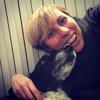




















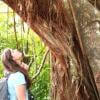



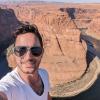

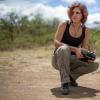


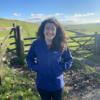









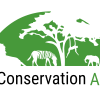
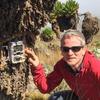
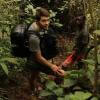

31 January 2023 3:01pm
Hi,
I'm the UX researcher at Rainforest Connection (RFCx). I use research methods such as interviews, usability testing, and card sorting to understand scientists' pain points and needs while using the bioacoustic monitoring platform, Arbimon.
In terms of tools, I use Figjam for brainstorming and mapping, Notion for a research repository, Zoom for interviews, and Figma for prototyping. I'm exploring how to use ChatGPT to speed up my process too! I use it to draft recruitment emails, summarize transcripts etc. I try to use tools that are either low-cost or that RFCx already has subscriptions of.
Since I'm a UX team of one, I also partner with University student groups/practicum courses to let UX students take on some of our projects.
Feel free to reach out; I'm always happy to chat.